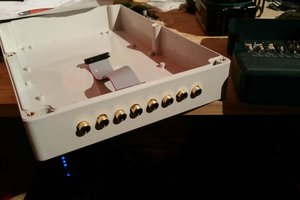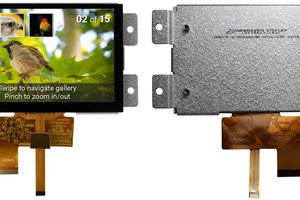Originally dreamt up because we couldn't find a machine called "terrapin" after a power disruption. The machine was powered off but being a server class machine it had enough fans running and blinky lights going that finding it was difficult. It had a completely different name on the old fashioned paper label. and all the time we wear searching for it we had a dozen devs breathing down our necks because they couldn't start work.
Once I'm done with the prototype phase which is working out how to talk to the display from the Atmel, the minimum memory for the frame buffer of a 2 inch display, I hope to lay out and order a PCB that has just the parts I need, and is just the size I need.
Looking at the seed studio board, if I incorporate the Atmel chip on the board and remove the reset switch, and sd card, I should be able to squeeze everything I need into a PCB not much bigger than the EPD.
Also to work out is a simple serial protocol, at the moment It's basically a letter followed by arguments.
c - clear
x 0 - move x to 0px
y 0 - move y to 0px
t some text - print text at this point, increment y by 14px
d - draw the displayThis is mostly based on the limitations and constraints of the libraries provided, I hope as I write my own the options for more features - at least "clear line", and "clear rect" will be possible meaning partial updates to the frame (the whole image still needs to be re-drawn but it'll still be quicker than re-defining a whole frame from scratch)
As you can see, I have a sketch of a case to put this in, it's the perfect dimensions to clip on to the front of any standard 1ru case that has any sort of seam. An alternative case might be one that has screw mounts to screw into the rack studs, eventually I want to see manufacturers install this inside their cases.
I know a lot of cases already have LCDs in them, I hope to win any arguments with "cheap, requires near no power to operate, and in the event of a power failure, continues displaying while other display products go blank"

 John Adams
John Adams
 Matt
Matt

 Mangus Tiranus
Mangus Tiranus